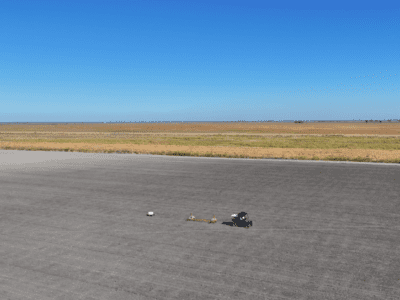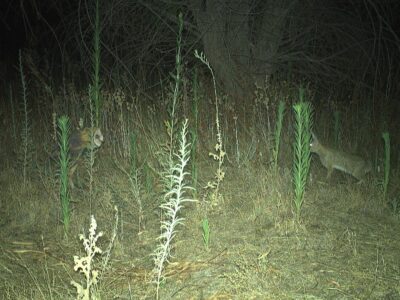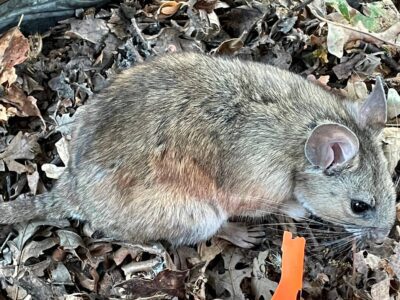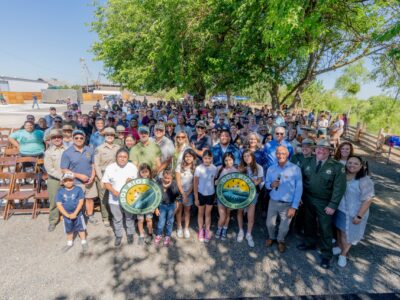On February 17, 1986, more than 17 inches of rain battered California’s Central Valley in a single 24-hour period. The floodwaters destroyed bridges, tore through levees, and drowned all but a tiny remaining number of endangered riparian brush rabbits, which live only in the San Joaquin Valley.
California’s most critically endangered mammal, these bunnies are a subspecies of cottontail that was once abundant across the lowlands of the San Joaquin Valley. Conversion of riparian forests to agricultural fields eliminated the majority of their habitat. By the late 1990s, they were reduced to one population at Caswell State Park, the largest remaining fragment of old growth forest in the San Joaquin.
River Partners’ riparian brush rabbit recovery efforts are part of our ecosystem-wide restoration of Dos Rios Ranch, the largest floodplain reactivation project in California.
A decade ago, River Partners and the US Fish and Wildlife Service created expanded riparian brush rabbit habitat at the San Joaquin River National Wildlife Refuge and along the Stanislaus River. We built raised mounds within the revegetated floodplains to save the rabbits from death by drowning, particularly during short duration floods. However, during prolonged floods, which have become more frequent in the San Joaquin Valley due to climate change, bunnies crowded onto the mounds and quickly devoured all of the vegetation, exposing them to both predation and starvation.
At Dos Rios Ranch, River Partners is addressing this important lesson by constructing ramps to larger refuge areas. As floodwater rise, the bunnies can save themselves by moving up the ramps through native vegetation specifically designed to offer food and shelter.
In addition to making accommodations for rabbits, our restoration designs go hand-in-hand with creating habitat for fish. We built the elevated terrain for bunnies by moving levees and excavating ground that support endangered salmon.
Removing small levees, or berms, reconnects the river to the floodplain even during small flood events. On the reactivated floodplain, we have excavated lower-elevation swales that collect water and allow it to pool and grow nutrients needed for juvenile endangered salmon to rest, forage, and gain weight before continuing toward the Pacific. The swales extend the inundation period so that tiny salmon have enough time to take advantage of the nutrient rich flood waters even during shorter duration flood events.
Ecosystem-wide design at Dos Rios: When floodwaters rise, salmon enter the excavated swale and bunnies exit via the ramp. When floodwaters recede, juvenile salmon follow the swale back to the river.
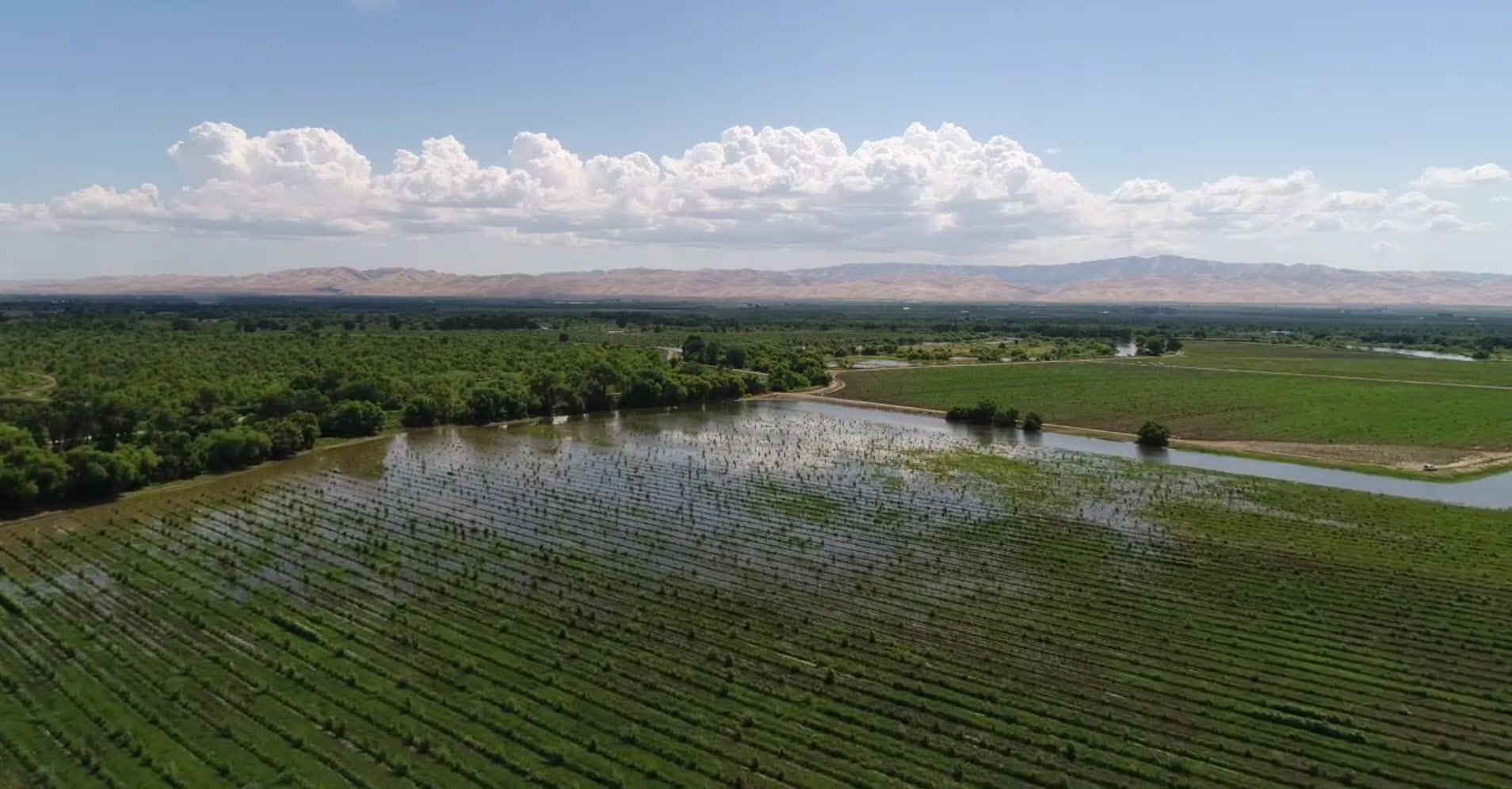
Aysha Massell, the coordinator of the Central Valley Salmonid Habitat Partnership, visited the Dos Rios project in May 2019 after the site had flooded. “The Dos Rios project is truly inspiring and a great example of what the Salmon Partnership hopes to replicate across the Central Valley.”
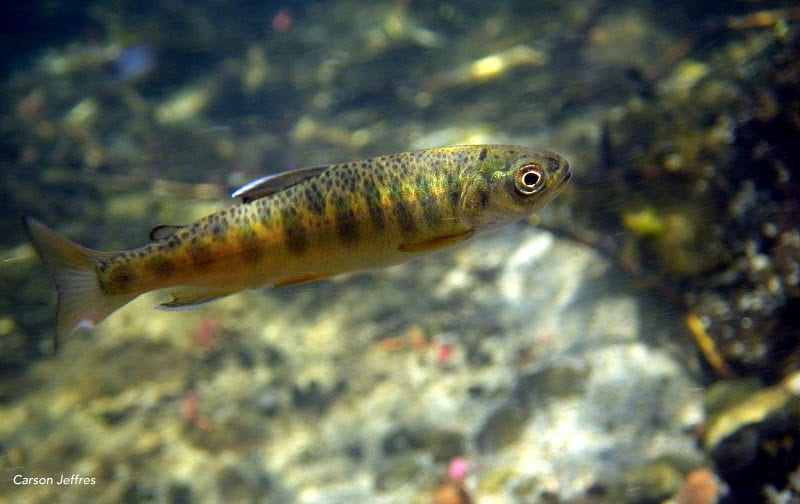
The urgent need to respond to more frequent flooding with expanded floodplains is a central part of the vision laid out in the Central Valley Flood Protection Plan and the Mid-San Joaquin River Regional Flood Management Plans.
Many dedicated partners have come forward to support this new model for ecosystem uplift. Federal agencies including Bureau of Reclamation, US Fish and Wildlife Service, and Natural Resources Conservation Service have been instrumental, along with California’s Department of Fish and Wildlife, Wildlife Conservation Board and Department of Water Resources. State and Federal regulatory agencies and the Central Valley Flood Protection Board and US Army Corps of Engineers provided leadership with regulatory clearance for a first-ever project of this scale in the San Joaquin Valley. Our work also relies on local communities to support these projects.
Together with our partners, River Partners is working to accelerate delivery of more floodplain restoration projects like Dos Rios that offer flood protection, and provide a host of other benefits including critical support for endangered species.

